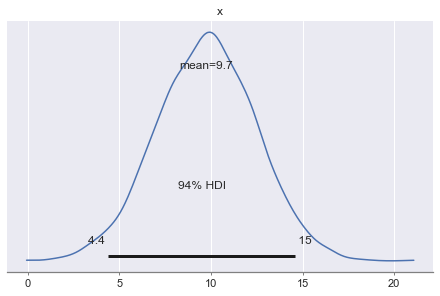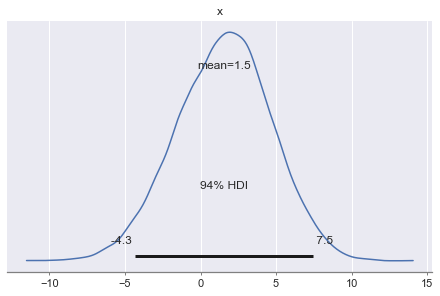Making predictions
Bayesian Data Analysis in Python

Michal Oleszak
Machine Learning Engineer
Number-of-clicks model again
formula = "num_clicks ~ clothes_banners_shown + sneakers_banners_shown + weekend"
with pm.Model() as model_2:
pm.GLM.from_formula(formula, data=ads_aggregated)
trace_2 = pm.sample(draws=1000, tune=500)
Ads test data
print(ads_test)
clothes_banners_shown sneakers_banners_shown num_clicks weekend
0 40 36 7 True
1 42 47 8 False
2 45 37 11 False
3 22 15 4 False
4 20 18 2 False
Sampling predictive draws
with pm.Model() as model:pm.GLM.from_formula(formula, data=ads_test)posterior_predictive = pm.fast_sample_posterior_predictive(trace_2)
Predictive draws
posterior_predictive["y"].shape
(4000, 5)
print(posterior_predictive["y"])
array([[12.83527253, 10.22454815, 11.20386868, 7.50227286, 6.85458594],
[ 3.1015655 , 6.1253004 , 11.38324931, 2.1844722 , 4.21451756],
[ 3.40141276, 9.10157964, 6.57689421, 8.26669814, 4.23812161],
...,
[10.97303606, 9.0772305 , 10.6877039 , 1.78448969, 6.75663075],
[ 8.53734584, 12.14079593, 11.00969881, 4.69875055, 8.317338 ],
[16.44713387, 17.35163824, 19.59359831, 2.84058536, 4.21108186]])
How good is the prediction?
clothes_banners_shown sneakers_banners_shown num_clicks weekend
0 40 36 7 True
pm.plot_posterior(posterior_predictive["y"][:, 0])

Test error distribution
errors = []for index, test_example in ads_test.iterrows():error = posterior_predictive["y"][:, index] - test_example["num_clicks"]errors.append(error)error_distribution = np.array(errors).reshape(-1)error_distribution.shape
(20000,)
pm.plot_posterior(error_distribution)
Test error distribution

Let's make predictions!
Bayesian Data Analysis in Python

